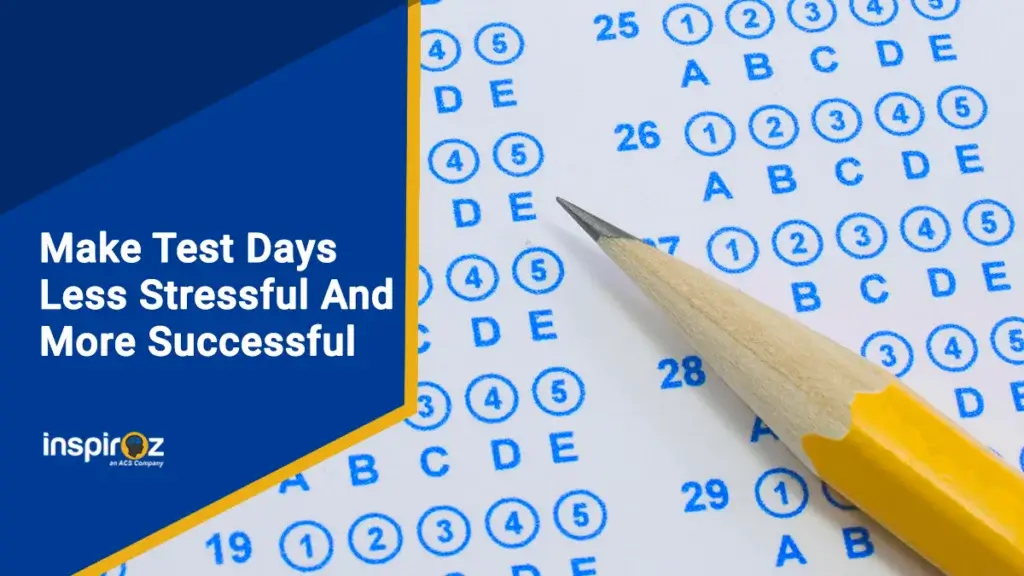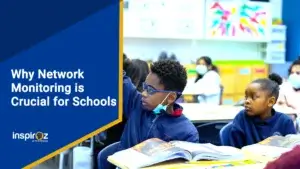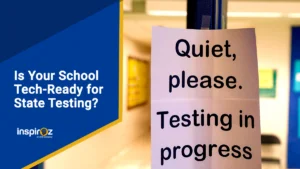Create the Best Testing Environments for Your Charter School
Making Test Days Less Stressful and More Successful for Everyone
Creating a charter school testing environment that fosters focus, comfort, and technical readiness is critical for student success on high-stakes test days. For charter schools across the nation, test days are more than just a box to check—they’re high-stakes opportunities that affect everything from student confidence to school funding. Whether it’s state-mandated assessments, benchmark exams, or internal progress checks, how your school handles testing environments can make or break the entire experience.
The goal isn’t just compliance; it’s about fostering an environment where every student has the best chance to perform at their full potential.
So, how do you create an optimal charter school testing environment?
1. Start with a Plan—Not Just a Schedule
Testing environments don’t get created on the fly. Schools need clear, coordinated plans that cover:
- Scheduling: Avoid overlapping with other major events (e.g., sports, performances, parent conferences). Test days should feel like their own thing—not just another day on a chaotic calendar.
- Communication: Everyone from IT staff to classroom aides to custodians should know the plan. Create a brief one-pager or checklist for each role involved.
- Backups: What if devices fail? What if Wi-Fi goes out? Having a Plan B (and C) is essential for preventing small hiccups from turning into full-blown disasters.
2. Device Readiness: Test Tech Before the Test
Here’s the harsh truth: even if your students are ready, your devices might not be. Too many schools underestimate the importance of tech hygiene before testing.
Quick Wins for Tech Prep:
- Update and reboot devices the day before.
- Verify network access and speed. Run bandwidth tests in each testing room.
- Disable unnecessary apps and tabs. Fewer distractions = fewer crashes.
- Lock down browsers using tools like SecureTest or kiosk mode (depending on your platform).
- Preload the testing URL or app on every device.
💡 Pro Tip: Assign one staff member as the “Device Marshal” to check each room 30 minutes before testing starts.
3. Quiet Comfort: Set the Physical Stage
The classroom matters more than you think. Students perform better in calm, distraction-free spaces. Lighting, temperature, layout—it all plays a role.
Ideal Physical Setup:
- Lighting: Natural light is great, but not if there’s glare on screens. Adjust blinds if necessary.
- Seating: Ensure proper spacing. Use testing carrels or partitions if possible.
- Sound: No noisy hallways, HVAC units, or playgrounds during test windows. Post signs: “Quiet Zone – Testing in Progress”.
- Temperature: Keep it between 68–72°F. Too hot = sleepy. Too cold = distracted.
- Posters: Cover learning aids or reference charts with cloth or paper.
And hey, don’t forget about the bathrooms. Make sure they’re clean and stocked before the testing block begins. A gross restroom break can throw a student’s focus off completely.
4. Prepare the People—Not Just the Process
The most overlooked part of a testing environment? The human side. That includes students, teachers, proctors, and yes—parents.
Teachers & Proctors:
- Host a quick refresher session on testing protocols. Walk them through the rules, what to say, how to handle disruptions.
- Distribute a Proctor Checklist that includes:
- What to bring (rosters, login cards, pencils)
- What to say (scripted directions)
- What to do if a student needs help
- Emergency contacts (tech support, nurse, admin)
Students:
- Talk to them about what to expect. Do a walk-through of the testing tool (practice tests are golden here).
- Emphasize effort over perfection. A calm brain performs better than an anxious one.
- Offer tips on sleep, breakfast, and tech (e.g., charging Chromebooks overnight).
Parents:
- Send a short email or flyer home with testing day dos and don’ts.
- Encourage early bedtimes, device charging, and no appointments on test days.
- Reassure them—no, their child’s future doesn’t hinge on this one test.
5. Nutrition and Timing: Never Test on an Empty Stomach
- This one’s basic but critical. Kids can’t concentrate if they’re hungry or running late.
- Offer a simple breakfast—even just granola bars and juice can make a difference.
- Build buffer time into your test day schedule. Rushing creates tension; tension lowers scores.
- Bathroom breaks before the test start time. Prevent interruptions later.
💡 Pro Tip: Consider staggering testing groups if space is tight. Don’t cram too many students into one room.
6. Expect the Unexpected: Escalation Protocols Matter
Murphy’s Law always applies: If something can go wrong, it might. That’s why a clear, calm escalation protocol is a must.
Create an Escalation Cheat Sheet for staff that outlines:
- Common issues (Wi-Fi drops, login fails, student anxiety)
- First response steps
- Who to contact (tech support, counselor, admin)
- How to report incidents (digital or paper forms)
Equip every testing room with a printed version. Include phone extensions, walkie-talkie channels, or emergency Slack/Teams group info.
7. Create Psychological Safety, Too
It’s not all logistics and hardware. Psychological safety has a massive influence on student performance.
- Normalize mistakes: “Just try your best. That’s all anyone can ask.”
- Celebrate effort: Create positive rituals—high-fives before entering the room, quiet claps afterward.
- Reduce the pressure: Avoid phrases like “this is important for our school funding” or “don’t mess this up.”
Instead, build motivation through belonging, encouragement, and small incentives like homework passes or fun stickers.
8. Post-Test Reflection: Close the Loop
Once the tests are over, don’t just move on. Take time to debrief.
With Teachers:
- What worked? What didn’t?
- Any tech issues to log?
- How did students respond to the testing environment?
With Students:
- Give them a voice. Let them share how they felt.
- Offer gratitude: “Thank you for your focus today—we saw how hard you worked.”
With Admin and Tech Teams:
- Run a quick post-mortem meeting. Document tech challenges, room setup issues, and process gaps.
- Update your Testing Playbook with lessons learned for next year.
9. It’s a Culture, Not an Event
Creating a positive testing environment isn’t a one-time event. It’s part of your school’s culture of excellence, care, and preparation.
Over time, when testing days are consistently smooth and student-friendly, they stop being scary. They become just another part of learning.
That’s the real win: when your students walk into a testing room thinking, I got this.
Final Thoughts
Testing doesn’t have to be a stress-storm of last-minute scrambles, tech breakdowns, and panicked students. With careful planning, communication, and empathy, your charter school can create testing environments that empower both staff and students to shine.
So don’t just “get through” test days. Own them.
By investing in everything from tech prep to emotional support, you send a clear message: We believe in you—and we’ve set the stage for you to succeed.
Need help optimizing your school’s testing tech or environment? Inspiroz offers managed IT solutions specifically designed for K-12 charter schools. From device readiness to day-of support, we help schools focus less on tech issues and more on student success. Learn more →







